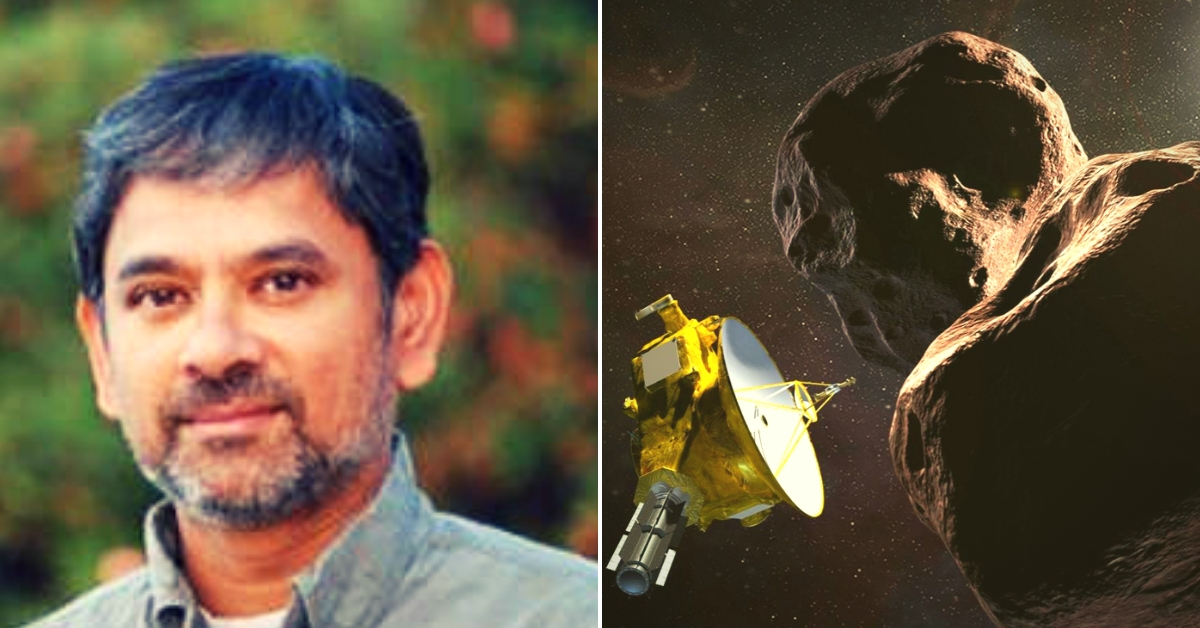Meet the Mumbai-Born Scientist Steering One of NASA’s Most Historic Missions!
NASA has just executed a nail-biting historic flyby of the most distant and ancient object in the solar system, Ultima Thule. And this man from Mumbai played a pivotal role in it!

Over the course of the New Year, the New Horizon probe by NASA, the American space agency, successfully conducted its most distant exploration of an object in our Solar System called Ultima Thule, which is some 6.5 billion kilometres away from Earth.
According to the Washington Post, Ultima Thule is a “rocky relic from the solar system’s infancy whose name means ‘beyond the borders of the known world.'”
Confirmation for the success of the mission came when a radio message from the unmanned probe was picked up by one of the American space agency’s antennas in Madrid, Spain.
Why does this probe matter to India, and specifically, the city of Mumbai?
Well, the man playing a critical role in navigating this probe to this object which NASA just discovered just four years earlier, is a Mumbai-born man who still maintains ties with the city.
Shyam Bhaskaran of NASA’s Jet Propulsion Laboratory was born in 1963 at a clinic in Matunga, a residential area in Mumbai.
Speaking to the Times of India, Bhaskaran said that his family lived in Kenilworth on Peddar Road, a locality where officials of the Department of Atomic Energy resided.

Attending nursery school at Kemps Corner, he would play with his friends in the locality and pedal a tricycle he owned. However, he was just five years old when his family left Mumbai for the United States. He returned to visit the city in 1981 and met with relatives.
Speaking to TOI, Shyam said he would definitely visit the city once again. He also spoke of the technical challenges involved in navigating the New Horizon mission to Ultima Thule, although it wasn’t as hard as the flyby past Pluto since there weren’t any objects around.
Also Read: Meet the Padma-Winning ISRO Pioneer Who Is Charting India’s Biggest Education Reform!
“But it was not without challenges because we have never done such an encounter of an object which was unknown, small and dark. Finding the object is difficult,” he told Times of India.
Why did NASA carry out this probe?
“It’s estimated there are hundreds of thousands of Kuiper members like Ultima, and their frigid state almost certainly holds clues to the formation conditions of the Solar System 4.6 billion years ago,” says this BBC report on the probe.
(Edited by Gayatri Mishra)
Like this story? Or have something to share? Write to us: [email protected], or connect with us on Facebook and Twitter.
If you found our stories insightful, informative, or even just enjoyable, we invite you to consider making a voluntary payment to support the work we do at The Better India. Your contribution helps us continue producing quality content that educates, inspires, and drives positive change.
Choose one of the payment options below for your contribution-
By paying for the stories you value, you directly contribute to sustaining our efforts focused on making a difference in the world. Together, let’s ensure that impactful stories continue to be told and shared, enriching lives and communities alike.
Thank you for your support. Here are some frequently asked questions you might find helpful to know why you are contributing?


This story made me
-
97
-
121
-
89
-
167













